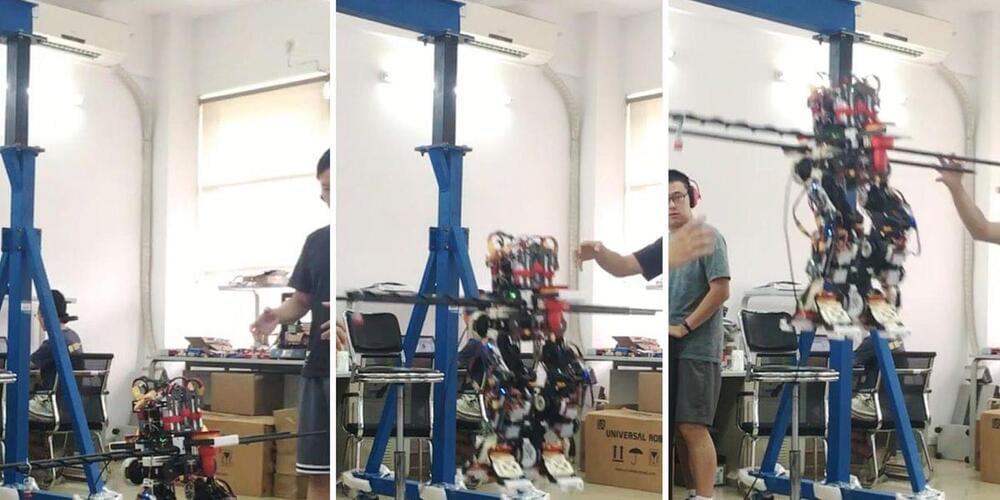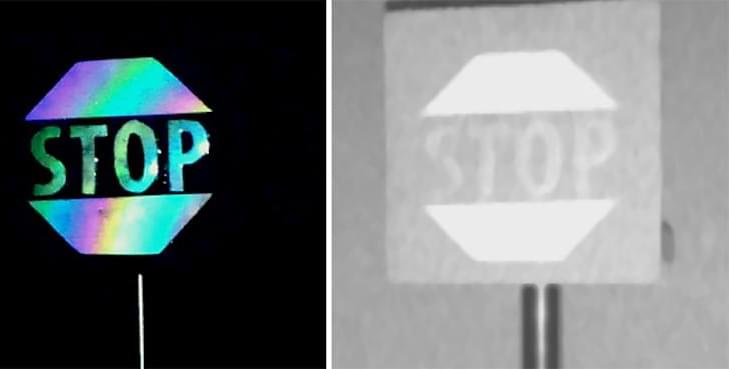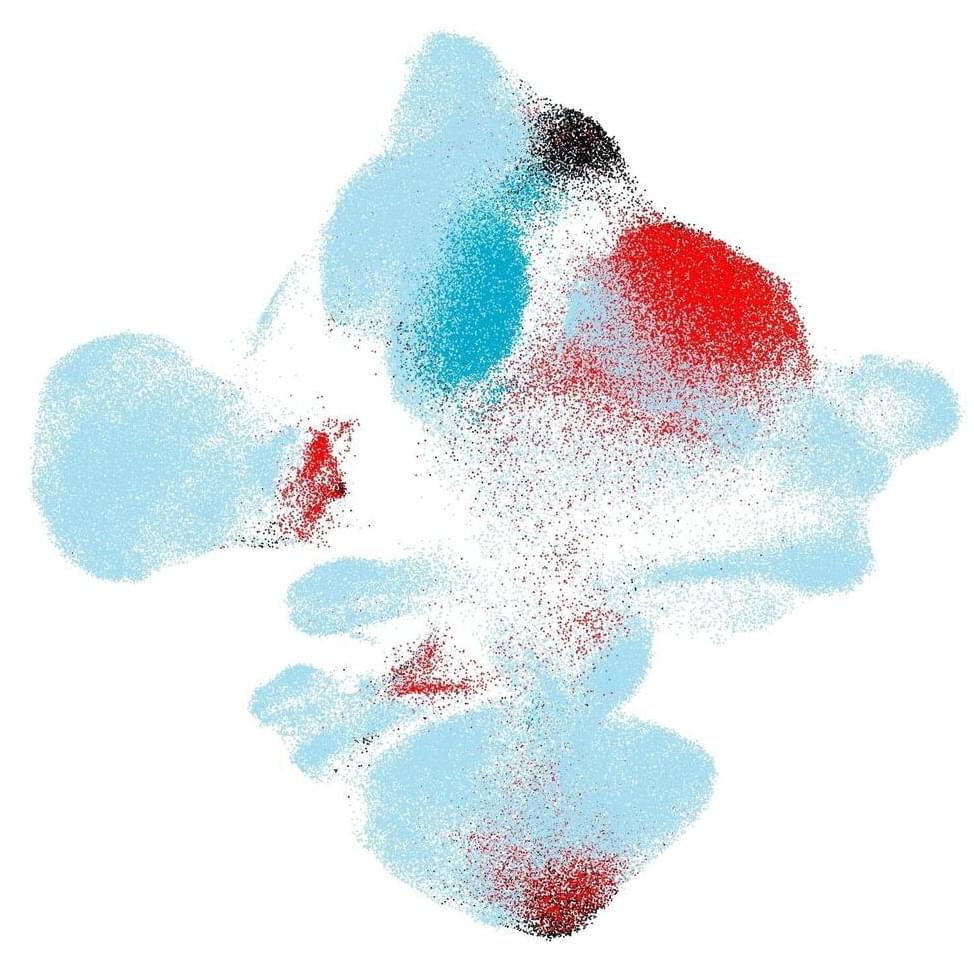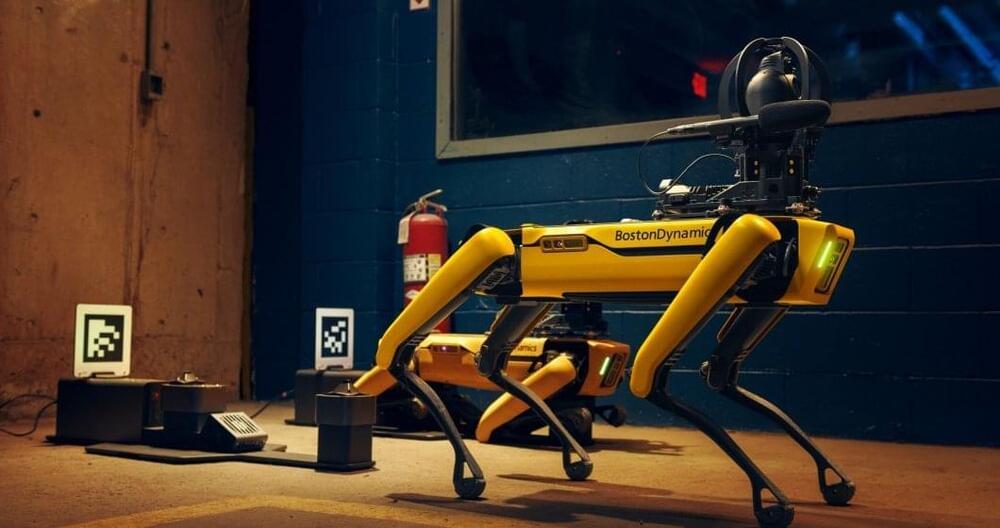As if humanoids weren’t hard enough, try getting one to fly.



I actually like this program.
“It watches what you’ve done in the past, what you’ve gotten right, and what you’ve gotten wrong,” he explained. “And then it tries to give you things that are not too easy or not too hard, but are sort of what educational psychologists would say are in your ‘zone of proximal development.’”.
In the wake of a noted IPO, EdTech player Duolingo showed off AI-infused updates to its language lesson platform.

Autonomous vehicles need to operate in a complex environment, and recognizing traffic signs is an important part of that. A new microstructured material reflects light in rainbow rings, which can make traffic signs easier for computer vision systems to read.
Even outside of fully autonomous vehicles, traffic sign recognition has been part of driver assistance systems for over a decade. Normally the technology is based on recognizing colors or shapes of signs, but it doesn’t always get it right in the real world, where readability can be affected by lighting, weather, obstacles, damage, or something as simple as stickers on the sign.
So for the new study a team of researchers investigated a promising new material that could make the job easier. It’s a new form of retroreflective material, already commonly used to highlight signs and road markings by bouncing light from a vehicle’s headlights straight back at a driver. But rather than focus that light, the new material scatters it to create eye-catching patterns.

The Human Cell Atlas is the world’s largest, growing single-cell reference atlas. It contains references of millions of cells across tissues, organs and developmental stages. These references help physicians to understand the influences of aging, environment and disease on a cell—and ultimately diagnose and treat patients better. Yet, reference atlases do not come without challenges. Single-cell datasets may contain measurement errors (batch effect), the global availability of computational resources is limited and the sharing of raw data is often legally restricted.
Researchers from Helmholtz Zentrum München and the Technical University of Munich (TUM) developed a novel algorithm called “scArches,” short for single-cell architecture surgery. The biggest advantage: “Instead of sharing raw data between clinics or research centers, the algorithm uses transfer learning to compare new datasets from single-cell genomics with existing references and thus preserves privacy and anonymity. This also makes annotating and interpreting of new data sets very easy and democratizes the usage of single-cell reference atlases dramatically,” says Mohammad Lotfollahi, the leading scientist of the algorithm.

Spot enables safe, reliable inspections — even in remote or hazardous locations — and unlocks repeatable, frequent data about your operations. https://bit.ly/2WxqjoN
Mobile robots enable safe, reliable inspections, even in remote or hazardous locations.

As the use of facial recognition technology (FRT) continues to expand, Congress, academics, and advocacy organizations have all highlighted the importance of developing a comprehensive understanding of how it is used by federal agencies.
The Government Accountability Office (GAO) has surveyed 24 federal agencies about their use of FRT. The performance audit ran from April2020through August 2021. 16 of the 24 agencies reported using it for digital access or cybersecurity, such as allowing employees to unlock agency smartphones with it, six agencies reported using it to generate leads in criminal investigations, five reported using FRT for physical security, such as controlling access to a building or facility, and 10 agencies said they planned to expand its use through fiscal year 2023.
In addition, both the Department of Homeland Security (DHS) and the Department of State reported using FRT to identify or verify travelers within or seeking admission to the United States, identifying or verifying the identity of non-U.S. citizens already in the United States, and to research agency information about non-U.S. citizens seeking admission to the United States. For example, DHS’s U.S. Customs and Border Protection used its Traveler Verification Service at ports of entry to assist with verifying travelers’ identities. The Traveler Verification Service uses FRT to compare a photo taken of the traveler at a port of entry with existing photos in DHS holdings, which include photographs from U.S. passports, U.S. visas, and other travel documents, as well as photographs from previous DHS encounters.
The voices on Amazon’s Alexa, Google Assistant and others still lack the rhythms and intonation that make speech human. NVIDIA has unveiled new tools that can capture those natural speech qualities.

As the middle child of the “DNA to RNA to protein” central dogma, RNA didn’t get much press until its Covid-19 vaccine contribution. But the molecule is a double hero: it both carries genetic information, and—depending on its structure—can catalyze biological functions, regulate which genes are turned on, tweak your immune system, and even crazier, potentially pass down “memories” through generations.
It’s also frustratingly difficult to understand.
Similar to proteins, RNA also folds into complicated 3D structures. The difference, explain Drs. Rhiju Das and Ron Dror at Stanford University, is that we comparatively know so little about these molecules. There are 30 times as many types of RNA as there are proteins, but the number of deciphered RNA structures is less than one percent compared to proteins.

It’s Friday and we’re taking a deep dive into the world of artificial intelligence! Yonatan Geifman (Co-founder and CEO – Deci) joins me this week to discuss how we can use AI itself to craft the next generation of AI. We also chat about how developers can streamline artificial intelligence development and where AI is headed in the next couple years and decades to come. Also this week, I take a closer look at new research from an international group of researchers that aims to answer the question: What if photonics can help us better recognize patterns for machine learning?
Wide Area Networks (WANs), the global backbones and workhorses of today’s internet that connect billions of computers over continents and oceans, are the foundation of modern online services. As COVID-19 has placed a vital reliance on online services, today’s networks are struggling to deliver high bandwidth and availability imposed by emerging workloads related to machine learning, video calls, and health care.
To connect WANs over hundreds of miles, fiber optic cables that transmit data using light are threaded throughout our neighborhoods, made of incredibly thin strands of glass or plastic known as optical fibers. While they’re extremely fast, they’re not always reliable: They can easily break from weather, thunderstorms, accidents, and even animals. These tears can cause severe and expensive damage, resulting in 911 service outages, lost connectivity to the internet, and inability to use smartphone apps.
Scientists from the MIT Computer Science and Artificial Intelligence Laboratory (CSAIL) and from Facebook recently came up with a way to preserve the network when the fiber is down, and to reduce cost. Their system, called ARROW, reconfigures the optical light from a damaged fiber to healthy ones, while using an online algorithm to proactively plan for potential fiber cuts ahead of time, based on real-time internet traffic demands.